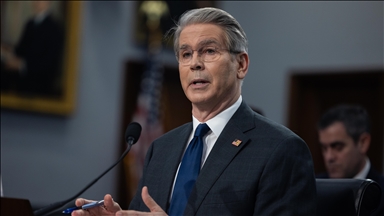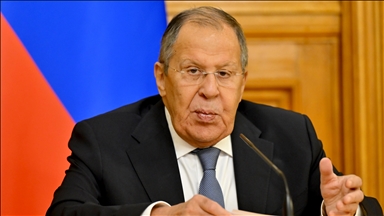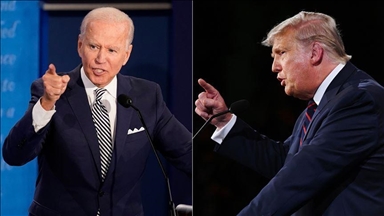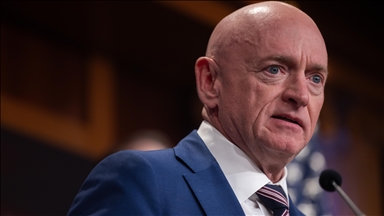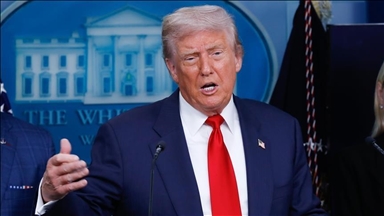Fed seeks direction with limited data ahead of next week's policy meeting
'We expect the Fed will move to slow the pace of easing, with three cuts spread over the course of next year,' Michael Pearce, deputy chief economist for US at Oxford Economics tells Anadolu
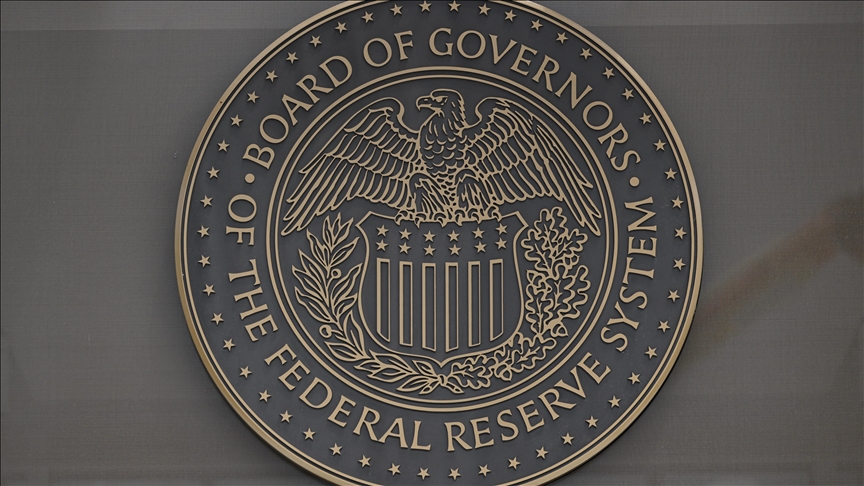
- Rate cut is a 'do no harm' move, since inflation does not seem out of control and labor market risks are to the downside,' says Steven Kamin, senior fellow at American Enterprise Institute
- Olu Sonola, head of US Economic Research at Fitch Ratings says, 'As odd as it may seem, the Fed will be happy with inflation staying around 3% for the next couple of months'
NEW YORK/ISTANBUL
The federal government shutdown deprives the Fed of critical data at a monetary policy meeting next week, and despite the uncertainty, it is expected to cut interest rates by 25 basis points.
The government shutdown, which began Oct.1 due to a budget dispute in Congress, is on day 25, disrupting the flow of critical data related to the national economy.
The Bureau of Labor Statistics (BLS) was unable to release weekly unemployment claims data, nor the nonfarm payroll report scheduled for Oct. 3.
The BLS, which also oversees inflation data, skipped the release of the Producer Price Index (PPI) data scheduled last week and released consumer inflation data late Friday.
Accordingly, the US Consumer Price Index (CPI) rose 0.3% month-over-month and 3% year-over-year in September, below expectations; core inflation, which excludes volatile energy and food prices, also fell short of expectations at 0.2% monthly and 3% annually.
White House spokeswoman Karoline Leavitt noted that inflation fell short of expectations thanks to US President Donald Trump's economic policies. "Democrats choosing to keep the government closed will likely result in no October inflation report, which will leave businesses, markets, families, and the Federal Reserve in disarray,” she said.
In the absence of official data, alternative publications, such as the ADP Research Institute's report on private sector employment and the Challenger, Gray & Christmas report on layoffs, were sought for signs of the labor market's health.
According to the ADP report, private sector employment fell by 32,000 jobs in September, contrary to expectations for an increase.
The number of layoffs announced by US-based employers also reached its highest since 2020, with 946,426 between January and September.
The Fed's field reports, such as the Beige Book, revealed a slight decline in consumer spending in recent weeks.
According to the latest BLS data, US non-farm payrolls increased by 22,000 jobs in August, below expectations, while the unemployment rate rose from 4.2% to 4.3%.
Speaking at an event last week, Fed Chair Jerome Powell said some data releases were delayed due to the government shutdown, but the Fed is looking at data such as state-level unemployment claims and ADP.
Powell emphasized that downside risks to employment appear to have increased, and emphasized that it has shifted the assessment of the balance of risks.
Powell emphasized that there will be no risk-free policy path while managing the tension between employment and inflation targets.
Other Fed officials noted differences of opinion on how to balance inflation, which is still above target, with a weakening labor market.
Some officials argue that inflation is still high and a rate cut is risky, while others call for "cautious rate cuts" due to the slowdown in the labor market.
Stephen Miran, appointed to the Fed board by Trump last month, favors faster rate cuts, arguing that interest rates are excessively high.
Analysts have said the disruption in the release of key economic indicators is making it difficult for the Fed to assess the economic outlook and determine policy direction.
Analysts point out that limited data flow has left the decision-making process at the Fed's monetary policy meeting from Oct.28 - 29 uncertain, and noted that the Fed will likely maintain its cautious stance amid the "data darkness."
Rate cuts still ‘too aggressive’ for 2026
Michael Pearce, deputy chief economist for the US at Oxford Economics, told Anadolu: "The smaller-than-expected rise in consumer prices in September gives the green light for a rate cut next week."
Pearce, however, pointed out that inflation is likely to remain closer to 3% than 2% for most of next year and market expectations for rate cuts still appear "too aggressive" for 2026.
"We expect the Fed will move to slow the pace of easing, with three cuts spread over the course of next year," said Pearce.
Noting that tariffs are still pushing up goods prices, he estimated that tariffs contributed 0.4 percentage points to headline inflation.
"With no data to convince the Fed that labor market conditions have improved in recent weeks, a rate cut appears assured next week," said Pearce. "As the downside risks to the economy fade, inflation risks will loom more heavily in their thinking next year, which we think WILL justify a more moderate pace of cuts."
4 years of missing inflation target
Steven Kamin, a senior fellow at the American Enterprise Institute (AEI), noted that the CPI data for September were indeed a bit softer than people expected but it is still well above the target level of 2%.
He noted that the target has been missed for over four years, and it remains unclear whether tariff-driven price increases are on the way or whether inflation expectations will remain stable.
He added that labor demand appears weak, and the reason the unemployment rate has not increased is because the labor supply has similarly weakened.
Like everyone else, he expects the Fed to cut interest rates again next week.
"That is a 'do no harm' move, since inflation does not seem out of control and labor market risks are to the downside, assuming the shutdown ends soon and data becomes available, the Fed will be able re-evaluate its strategy in December," he said.
'Insurance cut'
Olu Sonola, head of US Economic Research at Fitch Ratings, said the inflation print is a sigh of relief for the Fed and will not derail what is likely a second consecutive rate cut
"As odd as it may seem, the Fed will be happy with inflation staying around 3% for the next couple of months.
"The tariff passthrough generally remains muted, as the focus shifts squarely to a weakening labor market," said Sonola,
He noted next week's rate cut could be for "insurance" purposes, "with hopes that by December the shutdown is over and the Fed has a clearer read on jobs."
Sonola pointed out that the Fed will place greater emphasis on ADP private sector employment data and alternative data such as state unemployment claims data.
Anadolu Agency website contains only a portion of the news stories offered to subscribers in the AA News Broadcasting System (HAS), and in summarized form. Please contact us for subscription options.


